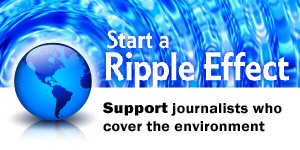SEJournal Online is the digital news magazine of the Society of Environmental Journalists. Learn more about SEJournal Online, including submission, subscription and advertising information.
 |
Reporter's Toolbox is a regular column focused on the world of data journalism, with an emphasis on data tools, techniques and database resources that journalists can use to improve their environmental reporting.
For questions and comments, or to suggest future Reporter's Toolboxes, email Toolbox Editor Joseph A. Davis at sejournaleditor@sej.org.
Journalists can receive Reporter's Toolbox free by subscribing to the SEJournal Online, the digital news magazine of the Society of Environmental Journalists. Subscribe to the e-newsletter here.






















 Advertisement
Advertisement 



